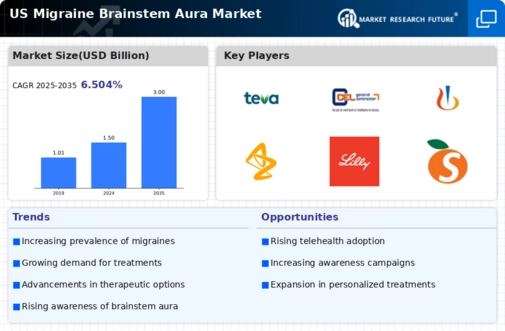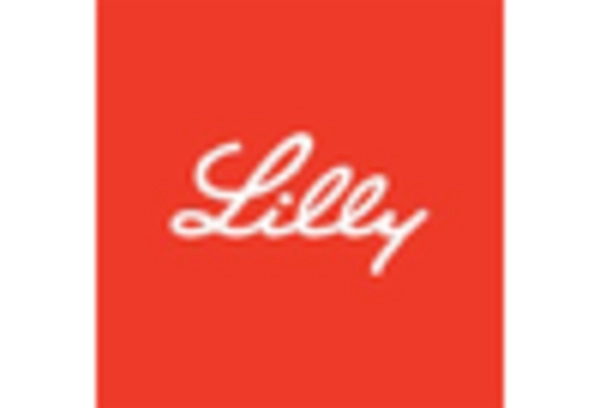Rising Incidence of Migraine Disorders
The rising incidence of migraine disorders, particularly brainstem-aura migraines, is a critical driver in the migraine brainstem-aura market. Recent studies indicate that the prevalence of migraines has been increasing, with factors such as stress, lifestyle changes, and environmental influences contributing to this trend. In the US, the economic burden of migraines is substantial, with estimates suggesting that it costs the economy over $36 billion annually in lost productivity and healthcare expenses. This growing burden highlights the urgent need for effective treatments and management strategies, thereby propelling the migraine brainstem-aura market forward. As healthcare systems respond to this rising incidence, there is likely to be an increase in funding for research and development of new therapies.
Technological Innovations in Treatment
Technological advancements in the treatment of migraines, particularly brainstem-aura migraines, are driving growth in the migraine brainstem-aura market. Innovations such as neuromodulation devices, wearable technology, and mobile health applications are transforming how patients manage their conditions. For instance, devices that deliver electrical stimulation to specific nerves have shown promise in reducing the frequency and severity of migraine attacks. The US market for these devices is projected to grow significantly, with estimates suggesting a compound annual growth rate (CAGR) of around 15% over the next five years. This surge in technological solutions not only enhances patient outcomes but also attracts investment and research into the migraine brainstem-aura market, indicating a robust future for treatment options.
Growing Awareness of Migraine Disorders
The increasing awareness surrounding migraine disorders, particularly brainstem-aura migraines, is a notable driver in the migraine brainstem-aura market. Educational campaigns and advocacy efforts have led to a heightened understanding of the condition among both healthcare professionals and patients. This awareness is crucial, as it encourages individuals experiencing symptoms to seek medical advice, thereby increasing the demand for effective treatments. In the US, it is estimated that approximately 12% of the population suffers from migraines, with a significant portion experiencing the brainstem-aura variant. As more people recognize the impact of these migraines on their quality of life, the market for targeted therapies and interventions is likely to expand, fostering innovation and investment in the migraine brainstem-aura market.
Growing Demand for Personalized Medicine
The growing demand for personalized medicine is reshaping the landscape of the migraine brainstem-aura market. Patients are increasingly seeking tailored treatment options that consider their unique genetic, environmental, and lifestyle factors. This shift towards personalized approaches is prompting healthcare providers to adopt more individualized treatment plans, which may include specific medications or therapies designed for brainstem-aura migraines. In the US, the market for personalized medicine is expected to reach $2 trillion by 2025, reflecting a broader trend towards customized healthcare solutions. As the migraine brainstem-aura market adapts to this demand, it is likely to see an expansion in the development of targeted therapies that align with the principles of personalized medicine.
Increased Investment in Research and Development
Increased investment in research and development (R&D) for migraine treatments is a significant driver of the migraine brainstem-aura market. Pharmaceutical companies and biotech firms are allocating substantial resources to discover and develop new therapies specifically targeting brainstem-aura migraines. This focus on R&D is fueled by the recognition of the unmet medical needs within this patient population. The US market has seen a surge in clinical trials aimed at evaluating novel treatment options, with funding for migraine research reportedly increasing by over 20% in recent years. This influx of investment not only accelerates the development of innovative therapies but also enhances the overall landscape of the migraine brainstem-aura market, fostering competition and improving patient access to effective treatments.

















Leave a Comment